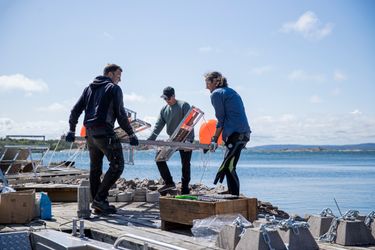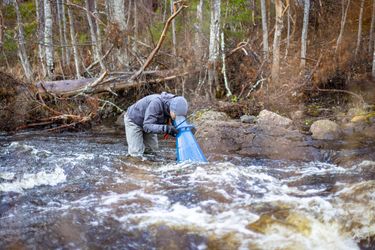
Restoration of pastures
In connection with OX2's construction of the Karskruv wind farm in Uppvidinge municipality, OX2 has taken the initiative to increase biodiversity values by recreating pastures.
To achieve and maintain a diversity of species, a variety of habitats is required. Overgrown pastures thus mean lost habitat for several plants, insects, birds, butterflies and other animals above and below ground. According to the Swedish Society for Nature Conservation, grazing animals are crucial to being able to keep large parts of our landscapes open, which is an important habitat for several species.
Why natural pastures promote biodiversity
Grazing animals help to limit plants that otherwise have the upper hand by eating them and making room for other plants. At the same time, the grazing animals spread seeds, trample up land where seeds can germinate and create food and nutrition.

The cows in Karskruv
One of the most significant efforts for biodiversity that OX2 has carried out in Karskruv has been the restoration of lost pastures. Together with the landowner Sveaskog and the wind farm's owner Orrön Energy, the 2.3 hectare land, previously overgrown with firs, has been restored to be able to develop its former flora and fauna. Natural pastures are preserved with the help of cows that from 2023 on and off graze on the land.
By reintroducing the pasture, the wind farm has created a favorable environment for a range of plant and animal species that depend on this habitat. With species such as daisies, bluebells and goldenrods, the pasture is once again able to flourish, benefiting the insects and birds that depend on them for survival.
A bigger perspective
That the cows in Karskruv work for increased biological diversity does not mean that we need more grazing animals in general. To promote biological diversity, the grazing animals we have must graze to a greater extent, and in the right place.
For effective and meaningful work around biodiversity, we see that it is important to scale successful efforts where possible and appropriate, which is why we share examples like this. However, we should not diminish the need for more knowledge about the effect of the measures on biological diversity in the short and long term.
There is much to learn about the restoration of environments and the effect it can have on biodiversity. Research from Yale finds that an increase in grazing animals in the wilderness can increase – in addition to biodiversity – the soil's ability to absorb and store carbon dioxide emissions. The study that looked at the reintroduction of bison in the Romanian countryside highlights 'rewilding' as an important tool for the ambitions to limit climate change and reverse the loss of biodiversity.
Facts:
- One of Sweden's environmental goals is a rich agricultural landscape where natural pastures are important.
- Since the middle of the 19th century, Sweden has lost over 95% of its natural pastures.
- According to the WWF, natural pastures can have up to 40 different kinds of plants on one square meter.


